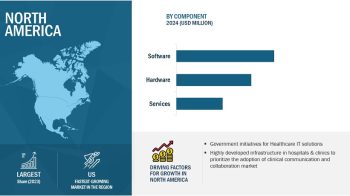Definition of Environmental Monitoring
Environmental monitoring is the process of collecting, measuring, and analyzing data about the environment in order to identify and track changes in the environment. It is used to evaluate the effectiveness of environmental management practices, determine compliance with environmental regulations, and assess environmental quality.
Benefits of Environmental Monitoring
- Regulations Compliance: Environmental monitoring helps organizations comply with environmental regulations, protecting them from potential fines or legal action for non-compliance.
- Improved Sustainability: Environmental monitoring helps organizations identify areas of improvement in their operations to become more sustainable.
- Risk Mitigation: By monitoring the environment, organizations can identify potential risks and take steps to mitigate them.
- Improved Efficiency: By tracking environmental conditions, organizations can better optimize their operations for efficiency and cost-effectiveness.
- High Quality Standards: Environmental monitoring helps organizations maintain high standards of environmental quality.
- Improved Public Perception: Companies that are seen as environmentally friendly can benefit from improved public perception.
Types of Environmental Monitoring
- Air Quality Monitoring: This type of monitoring involves measuring air pollutants such as particulate matter, ozone, nitrogen dioxide, sulfur dioxide, lead, and carbon monoxide. It helps to identify sources of air pollution and assess their effect on human health.
- Water Quality Monitoring: This type of monitoring involves measuring physical and chemical characteristics of water, such as temperature, dissolved oxygen, pH, and nutrient levels. It helps to identify sources of water pollution and assess their effect on aquatic life.
- Soil Quality Monitoring: This type of monitoring involves measuring physical and chemical characteristics of soil, such as texture, pH, and contaminants. It helps to identify sources of soil pollution and assess their effect on plant growth.
- Wildlife Monitoring: This type of monitoring involves observing, counting, and monitoring wildlife populations and their habitats. It helps to identify sources of wildlife disturbance and assess their effect on species and habitats.
- Noise Pollution Monitoring: This type of monitoring involves measuring noise levels in an area. It helps to identify sources of noise pollution and assess their effect on human health and wildlife.
Challenges of Environmental Monitoring
- Expense: Environmental monitoring can be expensive. This can include the purchase of equipment and materials, as well as the cost of labor associated with monitoring activities.
- Time: Environmental monitoring requires a significant amount of time to set up, collect data, and analyze results.
- Resources: Environmental monitoring requires access to resources such as trained personnel, specialized equipment, and data analysis software.
- Accuracy: Environmental monitoring requires accurate data collection and analysis to be effective.
- Complexity: Understanding and interpreting environmental data can be challenging due to the complexity of the systems being monitored.
- Communication: Effective communication of environmental data is essential for action to be taken.
Solutions to Environmental Monitoring Challenges
- Developing Innovative Technologies: Developing new technologies and using existing technologies in new and innovative ways can help to address some of the challenges that face environmental monitoring. This could include using sensors and devices to collect data on air and water quality, using drones to remotely monitor areas of land, and using artificial intelligence to analyze large data sets.
- Data Collection and Analysis: Gathering data from various sources and using it to inform decisions is essential in environmental monitoring. Analyzing data from remote sensing, field studies, and other sources can help to identify and assess environmental issues.
- Monitoring Networks: Developing and deploying networks of environmental monitoring stations can provide more comprehensive data collection and analysis. These networks can be deployed across cities, regions, and countries to provide a comprehensive view of environmental conditions.
- Improving Accessibility: Making environmental data more accessible and understandable can help to promote public participation in environmental monitoring. This could include making data available through mobile apps or websites, providing visualizations of data, and providing educational materials.
- Improving Coordination: Developing better coordination between government agencies, research institutions, and other stakeholders can help to ensure that resources are used effectively and that data is shared appropriately. This could include establishing formal systems of data sharing and collaboration, and improving the communication between different stakeholders.
Conclusion to Environmental Monitoring Challenges
The environmental monitoring challenges facing our world today are daunting, and it will take a concerted effort from governments, businesses, and individuals alike to ensure the health and safety of our environment. However, with the right tools, education, and commitment, we can all make a difference. With the use of innovative technologies, such as remote sensing, drone technology, and artificial intelligence, we can gain a better understanding of the environmental conditions in our communities and take appropriate action. By creating and implementing comprehensive environmental policies and regulations, we can ensure that businesses and individuals are held accountable for their actions. Finally, by engaging in sustainable practices, such as reducing energy consumption, reducing waste, and conserving natural resources, we can ensure that the environment is protected for years to come.

